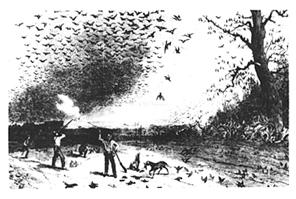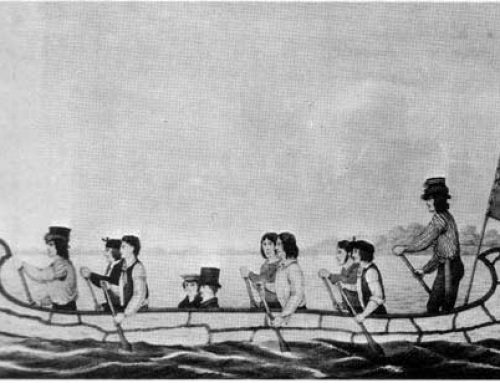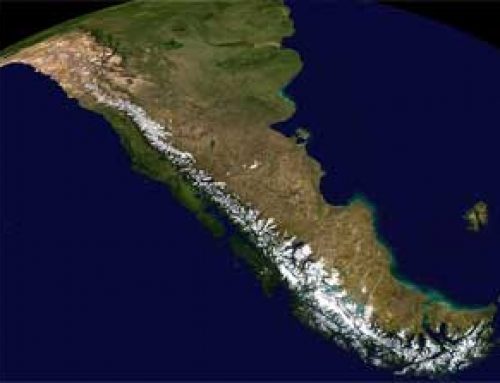
Hunting Passenger Pigeons, about 1800 AD: American environment
Most of the people died
The story of the environment of North America after 1500 AD is one terrible change after another. Shortly after 1500 AD, most of the people living in North America seem to have died.
Colonization timeline 1500-today
American geography and environment
All our American history articles
Most people caught diseases from European people who had been trading with them. By 1700 AD almost nobody lived in North America.
Wildness took over the land
As a result, these people’s farms went back to forest. The acorns and berries they had gathered fell to the ground. The animals they had hunted lived. For some kinds of animals and plants, this made a huge difference.
More about bison
Passenger pigeons, for instance, seem to have been rare in North America before 1500. Now they quickly became the most common kind of bird in North America. There also seem to have been a lot more bison by the 1800s than there had been in the 1500s.
Moose and elk struggled in the tangled bushes

A pile of bison skulls waiting to be made into fertilizer. Courtesy of the Burton Historical Collection, Detroit Public Library. � 1999
Because nobody was clearing the underbrush in the forests, it grew up everywhere. So although it was easy to walk through the forests in 1500, the same forests became an impassable wilderness of brambles in the 1800s.
Animals who needed to be able to walk freely through the forests suffered. Moose and elk from the 1800s were smaller and unhealthier than the moose and elk from the 1500s.
New people moved in
Then many people came from Europe and (by force) from Africa to live in North America. You would think that they would solve this problem and bring everything back into balance again, wouldn’t you?
They didn’t take care of the American environment
But the new people just saw an empty land with thousands of bison and billions of birds. They thought you could never use it up. So instead of taking care of the environment, as they would have done at home, the settlers just went ahead and used as much of everything as they wanted. Or they just wasted it. They thought there was always more where that came from.
They killed the animals and cut down the trees
By 1900 there were lots of people living in North America again, but there were no more passenger pigeons. There were almost no more bison. Most of the big trees – the oaks and chestnuts that had nuts people could eat – had been cut down. People used the trees for firewood or to build houses and fences. Or they just cut them down to clear the land for farmers’ fields. They built dams across streams, and now most of the streams had no more fish in them. There were almost no wolves.
Oil and pollution

Early Oil Rig in Virginia
Then about 1900, just as these new people were beginning to realize that you could, after all, use up all of the great resources of North America, and starting to set aside land for national parks, they discovered how to use oil and coal to run machines. Everyone was very excited by this. These new machines made everyone’s life a lot easier.
Oil and American science
The history of coal
But the oil rigs, and burning the oil in the machines, also polluted the environment of North America. By the 1950s and 1960s, rivers were greasy with oil. Birds were dying because of too much oil and other pollutants on their feathers. Even people were having trouble breathing when they went outside. Coal was polluting everything too.
Again, people began to realize what they had done, and they tried to clean things up a little. They made new laws to control the pollution from the oil.
Climate crisis from burning oil and coal
But by the 1970s, scientists were beginning to realize that all the pollution from the oil had also caused an even more serious problem – global warming. The smoke and gases from the burning coal and oil (and gasoline, which is made from oil) were hanging in the air. They kept the heat of the earth from escaping into space as it usually does. It was like a big blanket over the earth.
NASA explains global warming and climate change
So the earth was getting gradually hotter and hotter, just as if you would if you stayed under a big blanket all the time. That problem has not been solved. The earth is still getting warmer and warmer under its blanket of smog. And most of that smog comes from North America.
Learn by doing: ask an older person how the weather has changed in your area so far.
More about climate change
Bibliography and further reading about the American environment:




